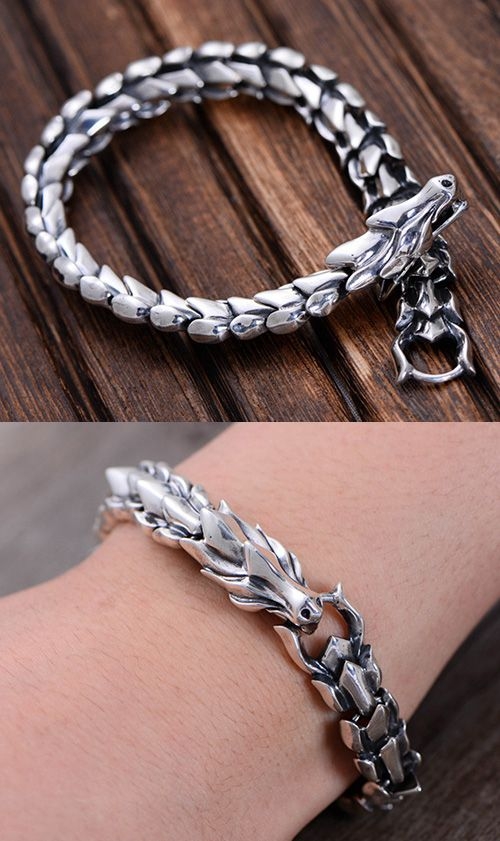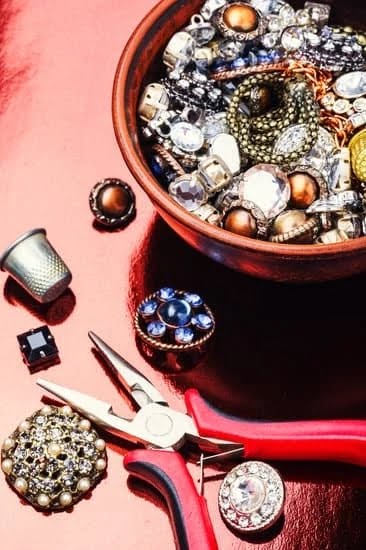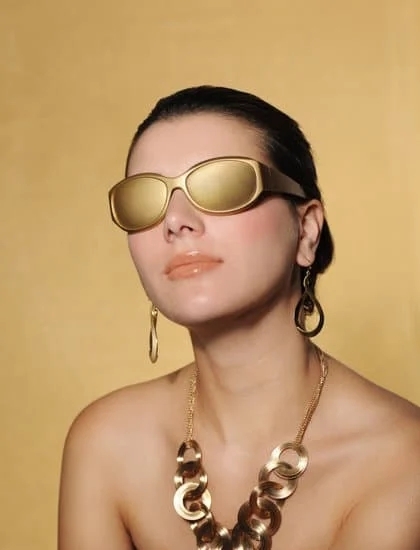Mourning jewelry was a popular type of accessory worn throughout the Victorian era. It is an ornamental piece of jewelry that was made to serve as a tribute to someone who had passed away.
This type of jewelry became exceptionally popular in England during the mid-Victorian period, and by the end of Queen Victoria’s long reign in 1901, it had become a well-established part of the culture. The goal of mourning jewelry during this time was to provide a physical reminder for loved ones who had passed on; it was often seen as a way for people to express their grief without actually having to talk about it.
Materials Used
Mourning jewelry from the Victorian era usually consisted of metal such as gold or silver, with materials like diamonds and other gems used sparingly. Pieces were typically crafted from jet, which is a black fossilized remains from prehistoric plants. Jet has been used in personal adornments since Roman times and quickly gained popularity amongst the mourners in Victorian Britain due to its perceived properties to ward off bad luck which made it highly sought after for its sentimental value.
Most pieces also featured lockets containing hair strands or photographs that doubled as pocket watches. Engravings such as mottos, initials, wreathes and crosses were common enameled decorations as well as garden scenes such as weeping willows and broken columns that represented loss and grief respectively.
Conclusion
Though many items have changed over time, mourning jewelry remains an enduring emblem of sorrow during the Victorian period that emphasizes sentimental values deeply tied up with concepts like remembrance and respect for those we have lost throughout our lifetime. Today the traditional pieces are still embraced by many around the world still providing them comfort even after so many years.
Historical Context of Mouring Jewelry During the Victorian Era
During the late nineteenth century, mourning jewelry was a prevalent part of life in the Victorian Era. In an age that was dominated by death and sorrow, jewelry came to represent symbols of loss and affection for those who had passed on.
The pieces weren’t fashionable per se – in fact, they were often perceived as a mark of respect for the deceased. Mourning jewelry has always been a somber reminder of cherished memories, which made it popular during this period in history as a way to keep the departed close at heart.
The Victorians spent lavishly on elaborate decoration and symbolism when it came to bereavement. As part of their deep commitment to honoring the dead, women often adorned themselves with jet black necklaces, earrings and other pendants made from materials such as silver and gold.
Made with intricate detailing, these pieces often contained strikingly beautiful images featuring angels or blooms representing eternal hope and eternal love-delicate reminders that no matter how bleak things seem, flowers still bloom and hope is still inherent within us all. Additionally, many pieces contained personal elements such as a lock of hair from someone recently deceased-the ultimate signifier of private grief rooted in an emotion so powerful it couldn’t be described by language alone.
Mourning jewelry didn’t just serve an emotional function-it also served practical purposes too. Many pieces included secret messages meant only for the wearer’s eyes with phrases such as “in memory of” etched into stones or quote from literature, scripture or poetry hidden on the reverse side.
This allowed individuals to express their grief without exposing themselves to public judgement – something that was notoriously frowned upon during this time in history – while simultaneously keeping their loved ones close at heart no matter where they may have gone.
For those grieving during this era, mourning jewelry served not only as a physical symbol but also a constant reminder that even our darkest moments are illuminated through hope – nobody is ever truly gone as long they live on within us through love and remembrance.
Popular Styles of Mourning Jewelry from the Victorian Period
The Victorian era was known for its adherence to the code of mourning and respect for the dead. As a result, mourning jewelry became popular during this period. Men and women alike decorated their clothing as well as their bodies with items that served as a reminder of a loved one who had passed away.
One piece of jewelry that was especially popular during the Victorian era was the “memento mori” necklace, which featured images of skulls or coffins, as well as gemstones in remembrance of those who have gone beyond. In addition to this type of mourning jewelry, lockets and lavaliers were also very common during this time, often making use of both precious metals and stones to honor the deceased.
A common feature found on Victorian memoriams was an etching or engraving with an inscription such as “in memory” or other sentiments chosen by the wearer in remembrance of someone special.
Another popular form of mourning jewelry from the Victorian era were pieces featuring entwined hair from a loved one. These pieces were crafted from either gold or silver, and could be shaped into various forms such as crosses or rings – often accompanied by small diamonds or other precious gems for added sparkle.
The use of hairwork dates back centuries before the Victorian period in England, but it began to reach a peak in popularity during this period – perhaps due to its intricate designs and personal nature created by using actual strands from the memorialized person’s head. Not only was hairwork visually appealing due to its delicate craftsmanship but it also served an important function by allowing people to keep close to them memories of those they have dearly missed.
Finally, mourning rings were also quite popular during the Victorian era – crafted mainly out indestructible black jet stone (or high quality glass) these rings featured words such as “remember” inscribed around it’s circumference serving more than adornment purposes but also providing comfort through its reminder.
This form of memento mori symbolized sorrowful sentimentality commemorated though death; however, hand carved hardstone cameos that often contained profiles portraitures inscribed into their design conveyed more positive sentiments associated with life after death nostalgia instead deathly grief.
Alongside traditional etchings lamenting loss you would also find detailed carvings featuring angel wings with symbols for resurrection – representing eternal hope and comfort till reimetioned at when life passes over into afterlife reunions happens once again separated souls are rejoined together eternally reunited afterwards forevermore.
Metals & Stones Used to Craft Victorian Mourning Jewelry
The Victorian era of mourning jewelry had a wide variety of metals and stones used to craft the pieces. Silver was popular due to its affordability, but gold was also used by those who could afford it. The metals were often combined with enamel, jet, or black glass for an Ebony look. All these materials made for intricate and elegant mourning jewelry designs that can still be seen today.
Stones also held great significance during the Victorian era. Turquoise represented undying love, whereas opals symbolized hope in difficult times.
Jet, the most popular stone used in this type of jewelry was thought to have properties that protected the wearer from negative energy and allowed them to show respect for their loved ones through their appearance whenever wearing it. Additionally, diamonds were often used as a representation of eternity and continuity as they were considered strong and long-lasting gems within Victoriana culture.
Lastly, pearls had a special role in mourning jewelry during this time as they stood for tears shed by family members who lost a loved one during times where emotions weren’t meant to be shown publicly.
Although not rooted in dark intentions or view on death, the pearls served as an outlet of expression allowing people to silently honor the departed while showing support to those hurt by their loss without arousing too much attention or appearing disrespectful in public settings.
These pieces proved so meaningful because all these symbolic elements were combined into beautiful motifs which further reminded them of their loved ones and allowed them to show reverence for those who passed away without being too overt about it.
Symbolic Representation of Mourning Jewelry During the Victorian Era
Mourning jewelry during the Victorian era had a symbolic representation for those who owned or wore it. This type of jewelry was used to memorialize a loved one following their passing.
This became very popular among the Victorians, a sign of remembrance and grief that was quite fashionable in high society circles at the time. Not only did this jewelry signify memories, but also provided owners with a tangible reminder that their loved one existed which would bring comfort after their death.
The materials used for mourning jewelry during the Victorian period were typically gold and silver, pearl, enamel and gemstones such as amethyst,Topaz and Jet. The items often featured symbols like Poppies to signify eternal rest, Ankh crosses as a sign of life, and wings symbolizing an uplifting journey to heaven. These items definitely weren’t meant to adorn oneself but rather show sincerity when wearing them in public.
Most commonly seen were mourning rings with ornate symbols such as a skull, tombstone or crossed swords. Some even included lockets held close to heart on chains, possibly containing a photo of your beloved relative inside it so you can keep them close spiritually yet physically be apart from them at all times.
Another type of mourning jewelry created during this period was known as ‘mourning brooches’. These functional pieces allowed people to show off their sorrow at special events or occasions-such as births/ deaths & marriages by pinning them onto lapels or plain clothing accessories like handkerchiefs or purses.
Although not always used for those type purposes though; some individuals chose commemorative designs like intertwining knots or garlands depicting landscapes touching on home – which served more than one use than just grief related ones alone.
These are still cherished reminders from our ancestors throughout these times today – with many being passed down through generations preserving our historical heritage in culture & tradition alike (namely British culture). It is important to consider how sentimental some may have felt during its widespread popularity in past centuries until present day too because without its presence before-we wouldn’t be able acknowledge what we appreciate now regarding sentimentality & devotion within family ties then & now alike..
How to Identify Genuine Victorian Mourning Jewelry
Mourning jewelry from the Victorian era was a popular way for people to memorialize someone who has passed away. During that time, belonging to a society of “mourners” was seen as a sign of respect and grief could often be displayed through the use of certain items of jewelry.
There are many different styles and materials used in Victorian mourning jewelry and proper identification can be difficult if you don’t have much experience. Unfortunately, these pieces can be very valuable, so proper identification is important if you are looking to invest in it.
One way to identify genuine Victorian mourning jewelry is by studying the materials used in its construction. Jet jewelry was a common choice during this period, as were items made with black enamel and some silver accents.
People also chose precious metals like gold or silver to create their mourning pieces; commonly created with lockets or brooches to represent the deceased person’s portrait, initials, or other special symbol. Many rings were set with multiple diamonds or pearls and there were other symbols such as a cross-shaped widow pendant that served to reminder the wearer of their beloved one they lost.
The best way to authenticate Victorian mourning jewelry is by hiring an experienced appraiser familiar with antique jewelry from this period. A professional jeweler can help you determine whether the piece is original by looking at markings on its settings as well as examining any coins incorporated into it.
Additionally, valuable items may have independent certification documents that verify their origin and age which will show more details about authenticity than any physical evidence could provide alone. If you ever plan on selling antiques from your collection, it pays off greatly to get them authenticated first.
Performance & Significance of Mourning Jewelry Over the Years
Mourning jewelry has a fascinating and storied history, demonstrated best by its prevalence in the Victorian era. Deriving from the earliest days of civilization, it was used to commemorate the life of a beloved person – for example loved ones who had passed away. Crafted from precious materials such as gold, enamel, diamonds and pearls; it symbolized remembrance of these people without speaking a single word.
The Victorian era was one of mourning’s most prolific times, where the artifacts were worn quite often in public settings. Much easier to access now with modern day technologies such as 3D printing, mourning jewelry has somehow managed to survive throughout time with minimal changes in formality and design.
Generally crafted out of metals like silver or gold and stones like onyx or jet, these items ranged from lockets containing hair of the deceased person (or portrait) to elaborate necklaces and rings adorned with intricate engraving or electrotyped mineral minerals.
Nowdays we can still see examples of mourning jewelry in galleries, museums and even some modern-day accessories such as charms and pins used most commonly during funerals today. While its primary purpose today is different from that which it served centuries ago; many cultures continue to use mourning jewelry to represent affection for those lost.
Whether this be through wearing a locket containing their photo or an engraved piece featuring beautiful poetry; these tender tokens live on – reminding us all of our shared humanity and powerful connections between us all.
Conclusion The Lasting Impact of Victorian Mourning Jewelry
Mourning jewelry in the Victorian era was a lasting trend that had an influence on culture, fashion and emotion for generations after. The mourning period typically lasted for a year and certain pieces of jewelry were often worn to commemorate the deceased.
This created many opportunities for jewelers to design elaborate and unique items specifically for this purpose. Mourning jewelry was not affordable to all but each piece was uniquely crafted to help symbolize remembrance and respect for the deceased, forming a connection between the living and those who have died.
The jewelry designs adhered to specific parameters, usually featuring dark stones like jet or deep purple mourning amethysts set in brass or silver depending on the cost of the piece. Symbolic motifs such as skulls and crossed bones were popular; so too were richly decorated lockets displaying images of the deceased or hair from them in some cases.
The revival of mourning jewelry in modern society provides an insight into how its use was rooted in intimacy – even long after death. It is not just a physical reminder but also a strong emotional reminder of our loved ones who have passed away which makes it an evergreen trend irrespective of time or place.
Even today traditional pieces along with new modern designs honoring departed family members are made and shared amongst those close to them in times of grief. In this way, mourning jewelry has endured as a unique expression of love reflected by a memorialization of sadness that continues until present day.

Welcome to my jewelry blog! My name is Sarah and I am the owner of this blog.
I love making jewelry and sharing my creations with others.
So whether you’re someone who loves wearing jewelry yourself or simply enjoys learning about it, be sure to check out my blog for insightful posts on everything related to this exciting topic!





